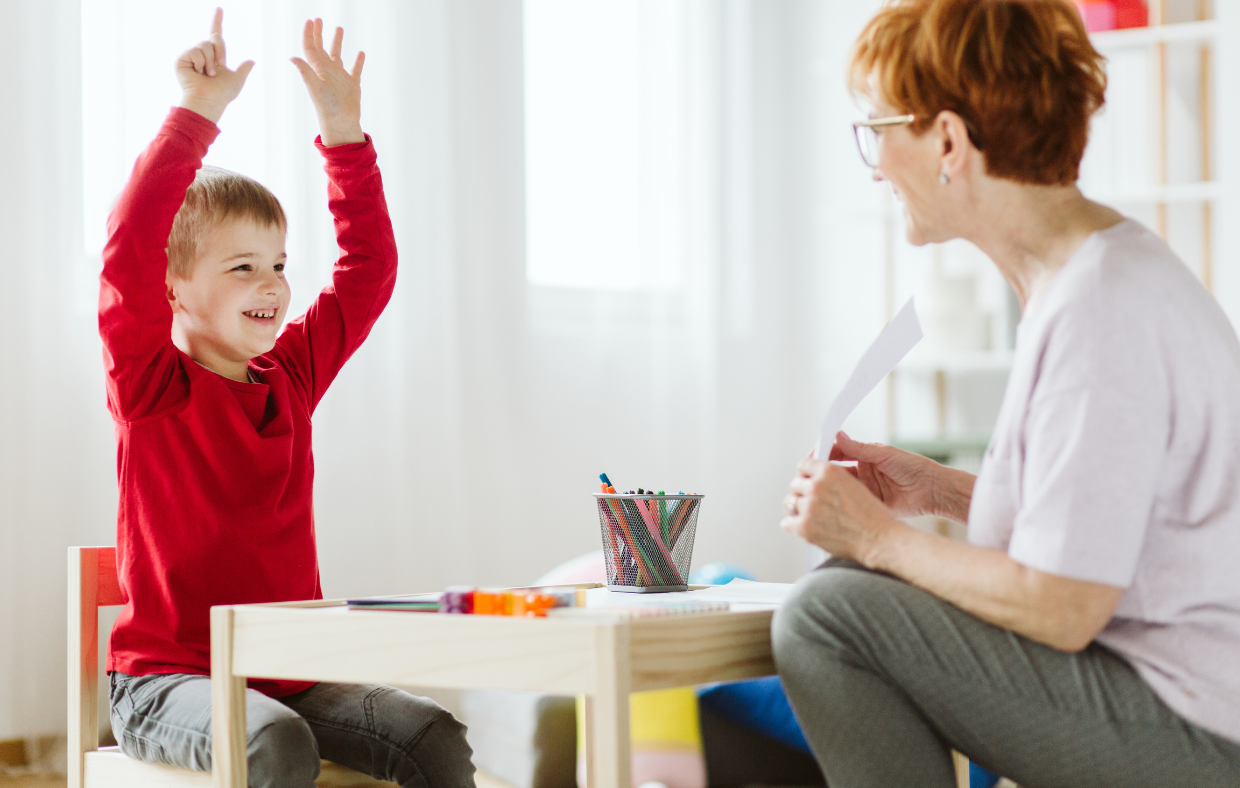Children often display behaviors adults find problematic, like having difficulty sitting still, making embarrassing comments in public, kicking the front seat while riding in the car, or running off at the playground. When our kids act in these ways, parents sometimes wonder: Could this be evidence of Attention-Deficit/Hyperactivity Disorder (ADHD)? As a medical provider, I know this can be confusing because many people—adults as well as kids—struggle at times with hyperactivity or lack of focus. For kids, it’s only when these traits significantly affect school, relationships, or home life that medical providers diagnose ADHD.
Common signs of ADHD and how it is diagnosed
Distractibility, hyperactivity, and impulsivity are the three signs I look for when considering an ADHD diagnosis for a child. Distractible behavior can look different from person to person. Some children might have difficulty sitting still and sticking with one task. Others might show subtler signs, like persistent daydreaming. These subtler signs are often more prevalent in girls than boys, but this isn’t true across the board. A hyperactive child might have so much energy that they are constantly moving around, fidgeting, or bouncing. An impulsive child might keep touching things that are off-limits or blurting out before thinking. For teens, impulsivity can result in high-risk behavior like drinking or driving irresponsibly.
Displaying these traits does not necessarily mean your child has ADHD. Mild symptoms can be within normal development. Distractibility, hyperactivity, and impulsivity can also be signs of other issues, including learning disabilities, constipation, post-traumatic stress disorder, anxiety or depression, or sleep apnea. We may diagnose ADHD when other diagnoses have been ruled out and when a child’s symptoms are hindering their ability to progress in school or are causing serious negative impacts at home.
If you wonder whether your child has ADHD, make an appointment with their medical provider to discuss what’s going on. Typically, the medical provider will ask parents and the child’s teacher to identify the child’s symptoms and evaluate their severity, then use that information to assess whether an ADHD diagnosis is appropriate.
Lifestyle changes can make a big difference
There are many lifestyle changes that help reduce distractibility, hyperactivity, and impulsivity, regardless of whether there is an ADHD diagnosis. I’m writing with kids in mind, but these help adults, too.
Limiting screen time: When we use electronic devices with screens, our brains get used to constant stimuli and begin to crave even more. Kids who spend a lot of time on screens generally spend less time exploring outside, practicing problem-solving skills, and developing relationships. I recommend that parents limit both the amount and type of screen time. Children get more out of watching things with a beginning, middle, and end. Watching a movie is much better than watching 50 YouTube videos in a row. For children younger than five years old, a good goal is an hour or less of daily screen time. For older kids, I’d recommend less than two hours per day.
A regular sleep routine: Depending on their age, kids should get 9 to 12 hours of sleep nightly and have consistent bedtimes. When kids don’t get adequate sleep, they can become hyperactive and have difficulty focusing, which can lead to more irritability and outbursts.
Regular physical activity: Kids need opportunities to use their bodies, challenge themselves, and get the physical and mental rewards that come from completing difficult tasks and learning new skills. Regular physical activity also improves sleep.
When kids are diagnosed with ADHD
If your child receives an ADHD diagnosis, their medical provider will work with you to make a plan to help your child manage their symptoms through lifestyle and behavior changes. They will also help you determine if medication is needed. Some parents fear that medication will blunt their child’s personality. That is never the goal and we, as medical providers, work closely with families to monitor how medications are working and make necessary adjustments.
An ADHD diagnosis does not limit your child’s future opportunities. Many notable people have had symptoms of ADHD, including Leonardo da Vinci, Albert Einstein, Michael Phelps, and Simone Biles, all of whom learned to channel their energy and passion into meaningful activities. The earlier ADHD symptoms are addressed, the earlier we can put interventions in place that will help children grow and thrive.
Dr. Casey Johnston is a pediatrician at MCHC Health Centers in Ukiah and Lakeport.

 MyChart Login
MyChart Login

